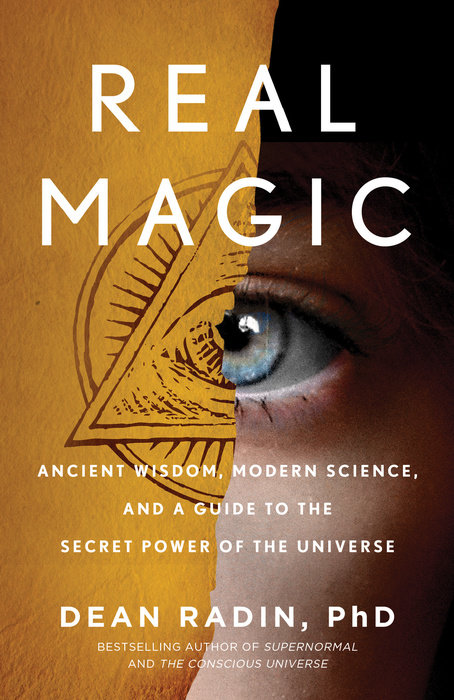An Introduction to Telepathy
What does it mean to be telepathic?
Telepathy is defined as communication between two or more people without using conventional methods such as language, signals, or other physical means that rely on the known senses.
The word “telepathy” was first used in 1882 by Frederic W. H. Myers, one of the founders of the Society for Psychical Research. Myers gave us this definition of telepathy: “Telepathy means direct communication from one mind to another. It refers to the supposed ability to perceive the thoughts of others without the use of recognized senses.”
Is telepathy real?
Telepathy has not been conclusively proven, nor has it been disproven. While there is no room for the concept of telepathy in classical Newtonian physics, quantum physics does not discount the possibility. In the words of the prominent nineteenth- and twentieth-century physicist, astronomer, and mathematician Sir James Jeans, who made key contributions to quantum theory: “The universe looks more and more like a great thought rather than a great machine.”
If telepathy were ever conclusively proven, it would mean that at least some of the foundational principles of classical physics, which rests on the idea of a mechanistic universe, would be rendered incomplete or—possibly—even flawed.
Instead of communication occurring only through the senses of sight, sound, taste, touch, and smell, demonstrable existence of telepathy would mean either that a heretofore undetected physical sense existed, or that consciousness itself was capable of communication with other units of consciousness without needing a currently identifiable physical means.
In short, the implications of genuine mind-to-mind telepathy are staggering—so much so that the consensus among the materialistic worldview dominant in much of academia and the scientific community is that telepathy is not possible.
And yet, evidence for telepathy exists—even if it falls short of conclusive proof.
What is the evidence for telepathy?
There is ample anecdotal evidence for telepathy, ranging from someone calling or texting moments after the recipient of the communication had been thinking about them without any expectation of contact to someone saying “I was just thinking about that” when another person brings up a topic unrelated to their current circumstances or conversation.
Such occurrences are, of course, non-scientific in nature and could be considered nothing more than coincidental. However, numerous studies with promising results have been conducted over the years, including:
- a 2003 study that found “correlations between brain activities of two separated subjects may occur, although no biophysical mechanism is known.”
- a 2005 study that determined “instructions to a healer to make an intentional connection with a sensory isolated person can be correlated to changes in brain function of that individual.”
- a 2011 study that led researchers to conclude that “mental connection at a distance is the act of attention tuning the radio” as opposed to this metaphoric radio—the human mind—picking up numerous frequencies simultaneously, which results in noise rather than clear messages.
Dean Radin, chief scientist at the Institute of Noetic Sciences, maintains a list of peer-reviewed studies on telepathy and other paranormal subjects on his website. The list includes some of the studies conducted by the Stanford Research Institute under the supervision of two prominent parapsychologists, physicist Russell Targ and engineer Harold Puthoff.
How can I tell if I have telepathy?
In assessing our own telepathic aptitude, the first step is to be aware of instances or incidents in our own lives that could fall under a broad definition of telepathy, such as thinking of a friend before they call. When such instances occur, jot them down in a journal.
Another way to experiment with telepathy is by using Zener cards with a partner. Zener cards come in a set of 25 and make use of five different symbols: a hollow circle, a star, wavy lines, a plus sign, and a square. One person looks at a card while keeping it hidden from view, and the person who has not seen the card guesses—or gets a telepathic hit—of what symbol was on a particular card. Correctly matching five of the twenty-five cards would be average; scoring higher than that on a consistent basis may indicate telepathic activity.
At one point in the mid-twentieth century, parapsychologist J. B. Rhine at Duke University used Zener cards in researching telepathy, or Extra Sensory Perception (ESP) as Rhine called it. Many of his results were above what would be expected statistically, but critics later found flaws in his methodology. Zener cards are not widely used today with telepathic experiments, but they remain somewhat popular among people who want to experiment with measuring potential telepathy.
Who has telepathy?
In theory, we may all possess undeveloped telepathic abilities, but anecdotes of telepathy existing in twins, people in love, or even between humans and animals with strong bonds are more common than stories of telepathy existing between total strangers or casual acquaintances.
Technology and Telepathy
While not “telepathy” in the same sense that Myers defined it in the 1880s, scientists and engineers are working on technology that would allow people to transmit their thoughts via small devices implanted in their brains. This technology is not yet fully functional, but the market for such telepathic technology would likely be enormous.
You Might Also Like Our Content on These Topics: Parapsychology, Clairvoyance and Precognition, Psychic Abilities, Intuition











